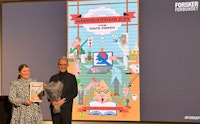Field of study: Music Therapy
Gisle Fuhr: Relational perspectives on music therapy with adolescents in child welfare services

How do music therapists and adolescents in child welfare experience their relationship? And what is the role of music in their cooperation?
Summary
This qualitative study explores relationships between adolescents and music therapists in the Norwegian Child Welfare Services (NCWS). Studies and reports on adolescents’ experiences of living in out-of-home care in the NCWS highlight the importance of strong and healthy relationships between adolescents and adult caregivers. The adolescents need adults who listen to them and care about their wellbeing, but challenges related to lack of stability and the complexity of the relational needs of the adolescents can make it difficult to establish such relationships. As a consequence, the development of healthy adolescent–adult relationships is a central focus in music therapy with adolescents in out-of-home care. Yet little research has been dedicated to exploring how adolescents in out-of-home care and music therapists establish and develop relationships through music therapy.
With this study, I aim to achieve a greater understanding of how adolescents and music therapists in the NCWS experience and talk about their relationships. Six adolescents in out-of-home care and their music therapists are interviewed in dyads. The interviews are analysed with a dual-focused approach:
First, a hermeneutic phenomenological thematic analysis is performed, with the aim of exploring how the adolescents and music therapists experience their relationships. Seven themes are developed through an abductive process, in which phenomenological theory is used as inspiration for interpreting the empirical material. Four of the themes centre on how the informants experience their feelings towards each other, with the other three themes centring on how the informants experience their interactions.
Second, a discourse-oriented thematic analysis explores discursive patterns in the informants’ descriptions, with an extended look into how the informants interpret and use the terms ‘music’, ‘therapy’ and ‘relationships’.
Results
Among the findings of the two analyses are that the adolescents identify feelings of realness, understanding, acceptance and respect for privacy in the relationships – feelings that are described as lacking in their relationships to other adults. All informants emphasize safety and trust as important feelings, but they also focus on the need for breaking away from safety through challenging themselves. Other findings show that over the course of time, the adolescents and music therapists develop their own, shared ways of talking about and understanding their relationships. However, the adolescents and music therapists also differ in how they describe aspects of their relationships, especially in discussions on concepts like ‘music’, ‘therapy’ and ‘therapist’.
Combining the findings of the two explorations, I suggest that the adolescents and music therapists of the study experience and talk about their relationship as one of unique possibilities. The possibilities of the relationship are intentionally kept limited in the earlier phases of the relationships, as the dyads start with focusing on a few activities that are familiar to the adolescents. In these early sessions, feelings of authenticity, normality, safety and trust are of great importance.
From there, the relationship develops in two ways. On one level, an implicit understanding develops between the adolescents and music therapists, as seen in how they gradually get to know each other better. On a second level, the relationships develop through interactions marked by creativity and vulnerability, such as music listening, performing, playing and talking together. In these interactions, the informants momentarily open themselves up to each other, to the music, and in some cases, to an audience. The two levels of relational development are interrelated: by becoming more familiar with each other, the adolescents and music therapists are able to challenge each other further and new possibilities become available. By challenging themselves and each other through creative activities, the adolescents and music therapists gain new understandings of who they are and what they can do together, which in turn, lead to greater feelings of safety and trust.
Considering the findings in light of discussions in child welfare literature, I suggest that music therapists can be a part of larger networks of support for adolescents in out-of-home care, and possibly, provide forms of support that the adolescents do not experience elsewhere. Furthermore, music therapists working in the NCWS may be able to reach adolescents who are generally sceptical of therapy and the mental health services, in that they offer a service that is perceived as helpful, without necessarily being perceived as ‘therapy’. However, since the study is based on the experiences of only a small number of individuals, more research is needed to gain a satisfactory understanding of relationships between adolescents and music therapists in the NCWS.
The dissertation
The dissertation is a monograph, and it is written in English.

Articles relevant
Published: Feb 25, 2019 — Last updated: Nov 28, 2025



